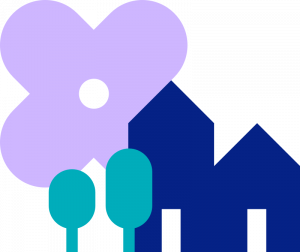Life has a way of throwing you curveballs that can cost money, perhaps quite a bit of it. Scrambling to come up with the cash to cover these sudden expenses can take time you may not have, and can add more anxiety to what may already be a stressful situation. A helpful resource for covering those unexpected expense—as well as major projects that require an infusion of funds—is a home equity line of credit.
Home equity line of credit basics
A home equity line of credit, commonly referred to as a HELOC, is a type of secured loan available to property owners. As the name implies, you are getting a loan based on the equity of your home. Equity is calculated by taking the current value of your home and subtracting any existing mortgages, liens or other liabilities against the property. The property serves as the collateral that secures the loan.
People often take out a HELOC as a second mortgage, but if you don’t already have an existing mortgage on your home, your HELOC which would then occupy the first mortgage spot in the hierarchy since there are no senior loans above it.
You can take a HELOC to finance a wide range of things, or simply to have a safety net that will be available in case of an emergency or unplanned expense. It is common for property owners to use a HELOC for home renovations, repairs or upgrades. This can be a smart move if those improvements increase the value of your home, making the HELOC an investment that can pay off in a profitable way.
Upsides of a HELOC
An advantage of a HELOC is that the interest rate tends to be relatively low, but the adjustable rate means you must be prepared for the rate to fluctuate. The interest you pay on a HELOC is usually tax deductible, up to a certain amount. Also, you only need to go through the application and approval process once, at the initial start of the process. After that, you will always have that credit—available for quick accessibility in case of emergency—without having to go through another application. You only owe based on the amount you have used, although some lenders do charge an annual fee for a HELOC regardless of what if any amount you have borrowed.
A source of recurring funds
Unlike a typical mortgage, which is an installment loan, a HELOC is structured as a revolving line of credit. That means it functions in a similar manner as a credit card, where you can draw from (in other words, borrow against) the loan up to the established credit limit. Making payments on your balance frees up more available credit, so you can keep reusing that credit over and over via a cycle of drawing on it and then paying towards the balance (or paying off the balance completely).
HELOC dollars and cents
HELOC interest rates are tied to the Prime Rate (called the index) plus a margin. The margin is a markup or added fee charged by the lender, and can depend on a number of factors including your credit score and history.
Lenders have a limit as to how much they will allow you to borrow with a HELOC, proportionate to the home’s value. This is called the loan-to-value (LTV) ratio, and for many lenders the maximum LTV ratio would be around 80 or 85 percent.
Interest rates for a HELOC are usually variable, although some lenders now offer the option of having a fixed-rate structure during some or all of the draw period or repayment period. If the HELOC lender doesn’t allow for a fixed-rate option, the monthly payments can fluctuate quite a bit and make it more challenging to plan your budget. Some borrowers opt to convert or refinance their HELOC, once it has entered repayment, to a fixed-rate mortgage in order to have a consistent, predictable monthly payment.
HELOCs terms, structure and rates can vary, so it’s a good idea to shop around and compare options among several lenders.
Repaying a HELOC
HELOCs are divided into two stages: the draw period and the repayment period. The draw period is usually 5 to 10 years, but can extend up to 20 years depending on what the specific loan allows. During this period, you can draw on the HELOC. Payments during this period may be interest-only, which is more common, or interest and principal. Once the HELOC enters the repayment period, you can no longer access funds and will be making payments that combine interest and principal.
Can you use equity to buy another house?
You can do pretty much whatever you want with the funds you take from a HELOC. One way to use it which many people may not consider is using a HELOC as the down payment to buy another property. Whether you want an investment property or a second/vacation home, you can draw upon the HELOC to help with the down payment to buy a house if you don’t have sufficient cash available. The attractive rates of a HELOC can make this a smart financial move, but you must consider all the angles carefully. If you are unable to make the payments, you will be putting your primary home at risk. By carrying the financial weight of two properties—and the loans that go along with them—you may be spreading yourself thin, and will also be at the mercy of any shifts in the real estate market.



